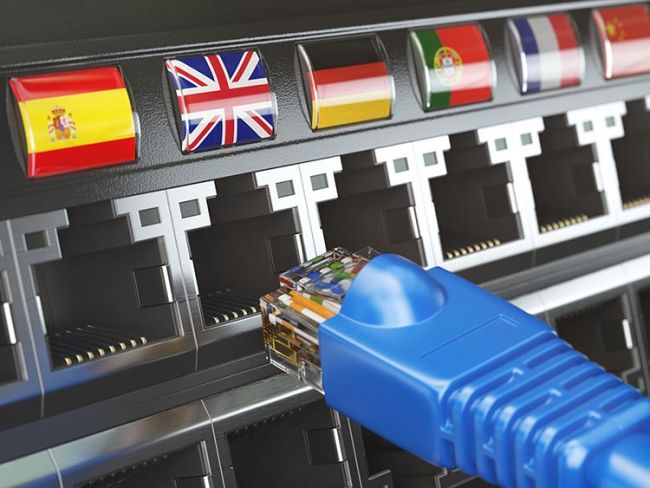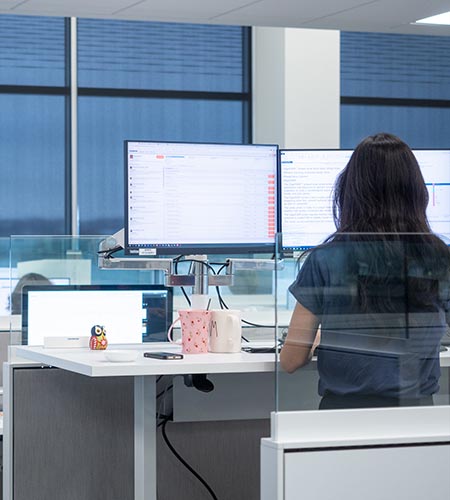For nondestructive testing (NDT) specialists from non-English-speaking countries, finding translated scientific material can be quite a challenge. English is the principal language used in the NDT field for documentation. As a global organization serving global customers, Olympus wants to help bridge this language gap and provide customers with material that will meet their needs, especially during in these challenging times when accessibility to online content is key.

Did You Know Our Translation Is Done In-House?
You may be surprised to learn that Olympus Scientific Solutions has its own translation department. Based in our Quebec City facility, for 15 years our dedicated team of in-house translators have strived to offer our customers as much translated material as possible. It is pretty unusual for a company to have its own translation service, but Olympus knows that translating our scientific material and support documentation brings value to our customers. So our translators work very hard to develop their expertise in our product lines and technologies, learning directly from Olympus product experts and developers.
The Human Touch Versus Machine Translation—It’s No ContestEven though translation apps and programs are more popular than ever, they cannot translate high-tech or scientific material in an accurate and appropriate way. This is where you can literally get lost in translation! This is why we feel it’s vital that our translations are carried out by real people, not computers! Olympus’ translation team is composed of dedicated language experts who are proud to contribute to our customers’ experience. Our team is also supported by external translators who enable us to manage the high volume of material we need to process. Together they translate into eight languages1, including Chinese, French, German, Italian, Japanese, Portuguese, Russian, and Spanish. |  |
The Translation Journey: Not as Simple as A to Z
The job of an Olympus translator can be challenging. It keeps them constantly on their toes since the subject matter they encounter can vary from day to day. They translate numerous content types, including webpages, technical documentation, software programs (for example, MXU, OmniPC, etc.), brochures, posters, blogs, application notes, whitepapers, and videos. What’s even more impressive? They also cover numerous technologies and product lines, such as NDT solutions (phased array flaw detectors, scanners, thickness gages, probes, and transducers), XRF/XRD analyzers, industrial microscopes, and videoscopes and borescopes.
Acquiring the necessary knowledge represents a real time investment for our translators. They have to learn not only the basic tenants of our wide range of technologies, from ultrasonic testing, phased array and eddy current to X-ray fluorescence and optics, but also all the associated terminology and acronyms (TOFD, TFM, FMC, etc.) in their own language.
To give you an idea, the translation journey for a single application note may take several weeks. When the English document is approved and ready, it is then submitted for translation. Our translators then dissect the text to understand the topic and communicate the information correctly. Once the translations are complete, they are submitted to experts for review. Translators implement the edits, perform a final quality control, and then send their documents for publication.

The task is tremendous because the same process is repeated for every piece of content Olympus produces in at least 8 languages. However, this is rewarding because we are communicating high-tech information in many languages for the sake of our customers.
There is also an unintended benefit for Olympus to having its own crack team of translators who are well-versed in our technologies. “As they perform their translations, they tend to notice any issues with the original English version and flag them to us before they’re published,” says Sarah Williams, a technical copywriter for the Olympus marketing department, “So our translators are like an extra layer of quality control that makes all of our documentation that much better.”
A Translator’s Work Is Never Done
We are working hard to ensure our existing content is translated, not to mention trying to stay on top of all the new content we generate. Olympus is an innovative organization, continually producing new products and advancements, so we also create new documentation on a regular basis to support our customers’ needs and help them stay informed.
Content that is translated into the supported languages is visible on the IMS website and resources pages. If we have not been able to translate it yet, an English-language version will be shown until we produce the translations. Stay tuned!
Related Content
Blog post: 10 Fun Facts You Didn’t Know About Olympus
White paper: TFM Acoustic Influence Map
Case Study: More Than Just Scratching the Surface — Improving Speed and Precision at Croda
1Other specific languages can be offered on a case-by-case basis. Terms apply.
.jpg?rev=C646)
